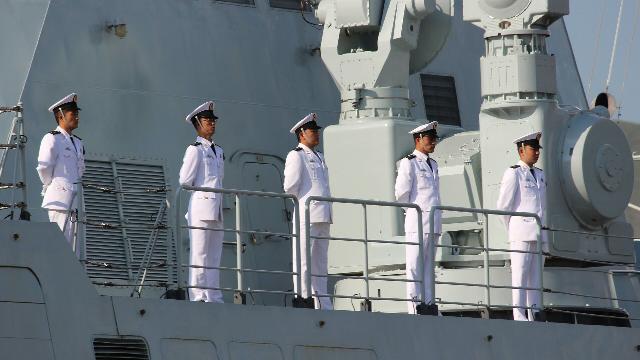MOSCOW, Nov 17 — RIA Novosti, Andrey Kotz. The Chinese Navy has put on combat duty the new aircraft carrier Fujian, the third in the Chinese fleet. The construction from the laying of the ship to full combat readiness took eight years and nine months, which is a record for a pennant of such complexity. Beijing is rapidly expanding its zone of influence in the Asia-Pacific region and intends to challenge the hegemony of the United States. What is known about the aircraft carrier is in the RIA Novosti article.
Ship and escort
Fujian is the first aircraft carrier built according to the original design using only Chinese technologies. It is classified as "Type 003". The ceremony of handing over to the fleet was held at the port of Sanya on Hainan Island. The solemn event was attended by Chinese President Xi Jinping.
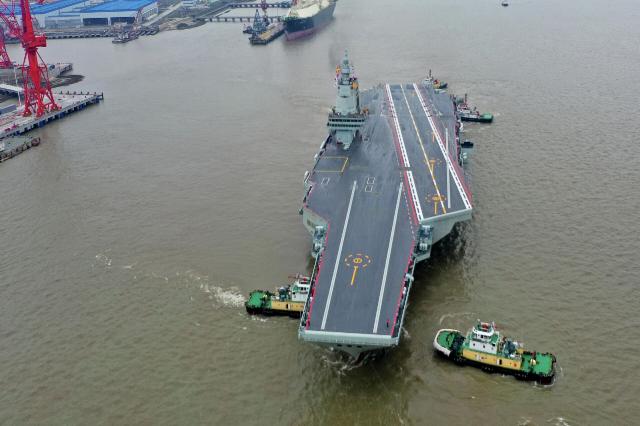
The Chinese aircraft carrier Fujian
Image source: © Getty Images / VCG
The ship was laid down at Shanghai's Jiangnan Shipyard Group in 2017. The structural elements were manufactured at various enterprises. Assembly began in 2021. In July last year, Western media published satellite images showing that the aircraft carrier had already received a superstructure and catapult launch systems. The Fujian was launched three years ago, and it underwent a full cycle of sea trials.
In parallel, an air wing was created for him. The deck pilots were trained in Wuhan on a concrete imitation of the Fujian. The Type 055 missile destroyers, which have been under construction since the end of 2014 and are second in displacement only to the American Zamvolts, are probably used as escort ships.
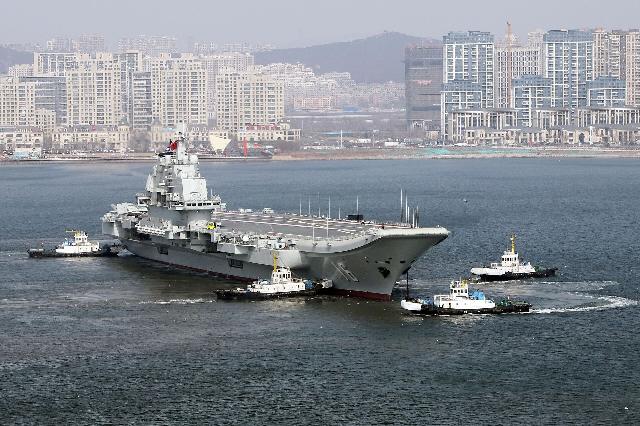
Liaoning Aircraft Carrier
Image source: © Getty Images / VCG
The PLA Navy already has aircraft carriers Liaoning and Shandong. The first is the unfinished Soviet aircraft carrier Varyag, which was transferred to China in the 1990s, and the second is a ship built according to a similar design. They were accepted into the Navy in 2012 and 2019, respectively.
Electromagnetic "know-how"
Fujian is the largest aircraft carrier built outside the United States. The total displacement is estimated at 80 thousand tons, length — 320 meters, width — 75. The ship inherited a non-nuclear power plant from its predecessors: steam turbines and diesel generators. In general, the Fujian is comparable to the American aircraft carriers of the 1960s such as the Kitty Hawk.

The Chinese aircraft carrier Fujian
Image source: © AP Photo / Japan's Ministry of Defense
But so far, only the newest American Gerald Ford has electromagnetic catapults for taking off carrier-based fighters like the Fujian. They accelerate the aircraft more smoothly than traditional steam engines, allow you to adjust the speed depending on the weight of the device, weigh less, and are simpler in design. They do not need to install a complex pipeline system and high-pressure boilers, which frees up space on the ship.
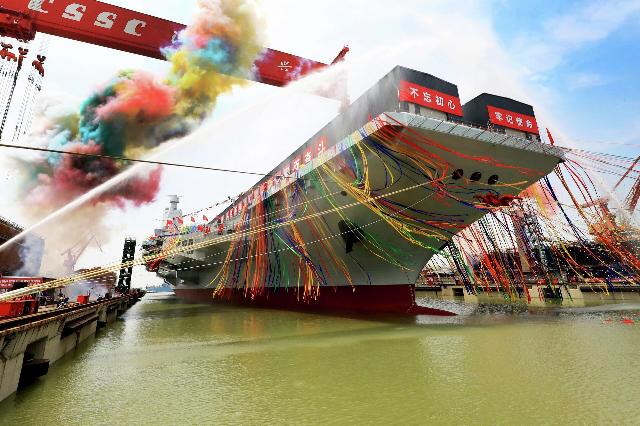
The Chinese aircraft carrier Fujian
Image source: © Getty Images / VCG
The superstructure and two elevators are on the starboard side, as on the aircraft carrier Shandong. The lifts are no longer lifting one aircraft at a time, but two aircraft at a time, which is a major improvement. Moreover, the superstructure turned out to be more compact: it houses a mission control center, a radar station with a phased array antenna, as well as communication facilities.
Fujian does not carry offensive weapons, and its air defense is limited to Type 730 rapid-fire anti-aircraft assault rifles and HQ-10 short-range air defense systems. The main striking force is the J—35 and J-15T/DT multirole fighters, KJ-600 long-range radar detection and control aircraft, as well as Z-20 family helicopters. It is claimed that Fujian is capable of taking on board more than 50 aircraft, not counting UAVs.
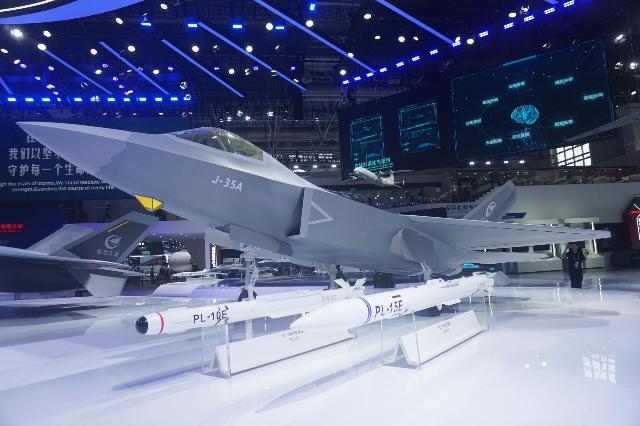
The J-35A fighter jet
Image source: © Getty Images / CFOTO
The latest fifth-generation carrier-based fighters, the J-35, are particularly interesting. The prototype first flew in 2021, and in 2024, the J-35 successfully completed flight tests. According to Chinese media, the fighter is inconspicuous: its effective scattering area (ESR) is smaller than a human palm. It is capable of carrying a wide range of weapons, including PL—17 air-to-air missiles with a range of up to 400 kilometers. Together with the J-35 AWACS aircraft, they will be able to control all approaches to the carrier strike group.
Escape into the World Ocean
Jin Cangrong, deputy director of the Institute of International Studies at the People's University of China, told the Global Times newspaper that Fujian was built to counter the so-called second island chain of deterrence of the United States, passing through the island of Guam.
"The Americans have deployed three island chains around us," he explained. — The first is Okinawa, Taiwan and the Philippines, the second is Guam, and the third is Hawaii. In fact, we have already extended our deterrence to the second one. Taiwan is a key hub in the former, where we have a very significant advantage. That is, its destruction is not a problem for China, although Beijing's policy towards Taiwan is still focused on peaceful reunification."
China is clearly plotting to challenge the hegemony of the all-powerful US Navy in the Pacific Ocean. And three aircraft carriers is not the limit. According to media reports, a full-fledged mock-up of the fourth was built in Wuhan. It has an estimated displacement of 115,000 tons, a length of 340 meters, and a width of 83 meters. The speed is more than 30 knots (50 kilometers per hour). The air wing consists of 60-80 airplanes, helicopters and heavy drones. It is assumed that this ship will receive a nuclear power plant.

The Chinese aircraft carrier Fujian
Image source: © Getty Images / VCG
"China is consistently increasing its capabilities to conduct operations at a significant distance from its territory," said Dmitry Stefanovich, a researcher at the IMEMO RAS Center for International Security. — This is impossible without an aircraft carrier, especially since Beijing still has the maritime part of the One Belt, One Road initiative. China also has a fairly active policy in Africa, and Pakistan should not be forgotten. But it is obvious that the Americans are most afraid of Chinese aircraft carriers."
And the US shipbuilding industry's budget is being cut. Just this year, the Pentagon abandoned the construction of two Virginia-class submarines and two Arleigh Burke-class destroyers. The fleet of Ticonderoga cruisers is gradually declining: all of them have been in service for more than 30 years. Noticeably outdated shipyards also lack capacity.
In terms of the number of warships and submarines of the PLA Navy, they already outnumber the Americans. Beijing is also ahead of Washington in terms of the pace of construction and commissioning of new pennants. All that was needed was an aircraft carrier fleet to become one of the most powerful naval powers. Now China has it.
